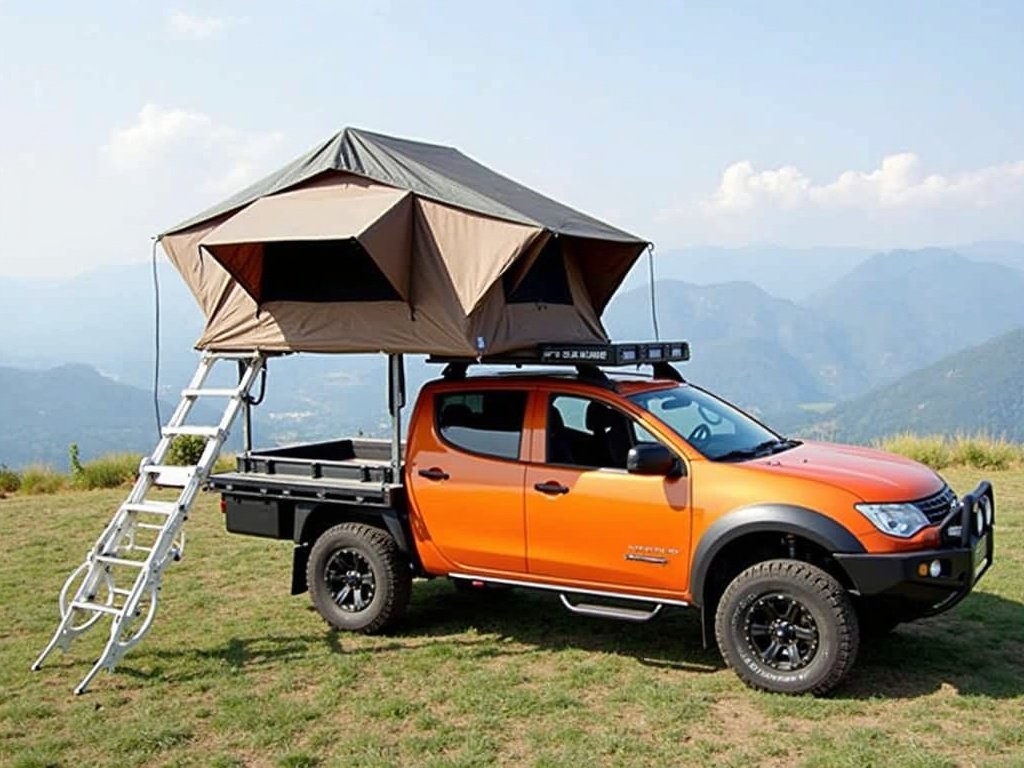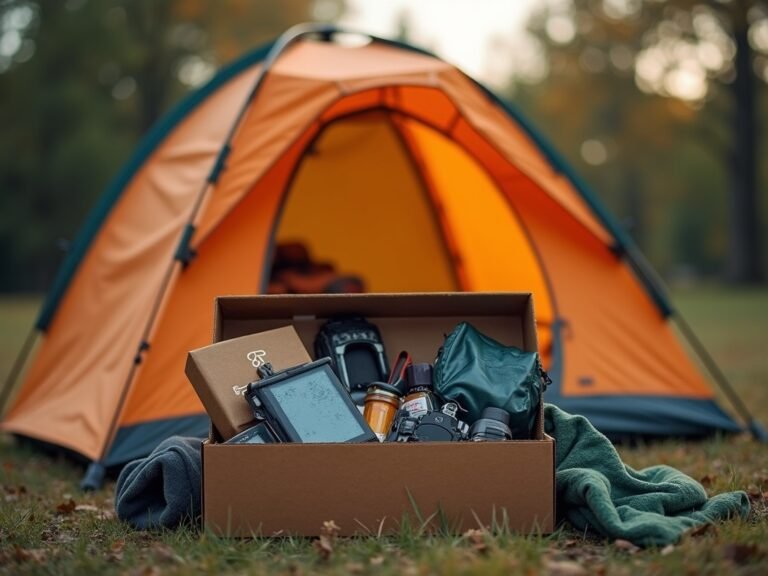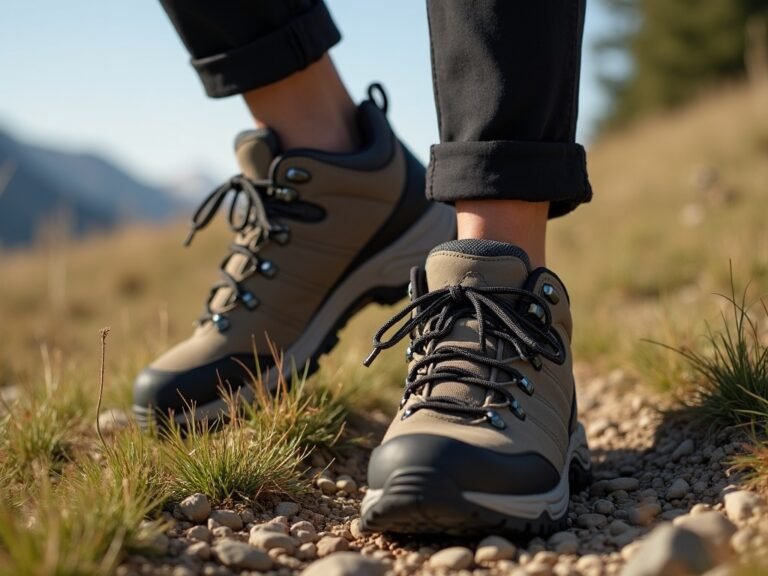How to Choose the Best Roof-Top Tent for Camping

How to Choose the Best Roof-Top Tent for Camping
Imagine rolling into a remote trailhead or scenic overlook, parking your vehicle, and climbing into a cozy sleeping space—no tent poles, no ground stakes, no stress. That’s the magic of roof-top camping. But to truly elevate your experience, choosing the Best Roof-Top Tent is essential.
From rugged off-road adventures to spontaneous weekend escapes, your tent should match your travel style, terrain, and comfort needs. These elevated shelters offer the convenience of quick setup, the thrill of better views, and the peace of mind that comes from sleeping above the elements—and the critters.
With so many models on the market, picking the right one can feel overwhelming. Do you want a hard-shell for speed and durability or a soft-shell for flexibility and space? Are you prioritizing weight, mattress quality, or an easy mounting system?
This guide simplifies the search. Packed with tips, comparisons, and real-world considerations, it’s everything you need to confidently invest in the Best Roof-Top Tent for your next adventure. Because where you sleep shouldn’t be an afterthought—it should be the highlight of the journey.
What Is a Roof-Top Tent Anyway?
Let’s start simple. A roof-top tent (RTT) is a tent that mounts on the roof of your car, truck, or SUV. Instead of sleeping on the ground like traditional camping, you sleep above it all—literally.
Why is that so great? Well, imagine getting away from uneven ground, dirt, bugs, and puddles. Picture this: you’re watching the stars from your cozy perch with a view, nestled in your rooftop haven. Not bad, right?
The Basics at a Glance:
- Mounts on your vehicle’s roof rack
- Pops up or folds out when you set up camp
- Includes a mattress (yep, comfort is built-in!)
- Offers better airflow and views than ground tents
Why Choose a Roof-Top Tent?
If you’re still wondering whether it’s worth the investment, here are some solid reasons people are falling in love with them:
- Easy to set up: Most RTTs take just a few minutes to unfold—some even with one hand!
- Built-in comfort: A lot of roof-top tents come with a soft, high-density foam mattress.
- Better views: Since you’re elevated, you’ll get great scenery and better airflow at night.
- Safe from ground critters: Keep your sleep space out of reach of bugs and curious animals.
- Adventure-ready: Great for off-roading or dispersed camping where flat ground is hard to find.
I took my RTT on a road trip through Utah’s national parks, and honestly? Best sleep on the road I’ve ever had. No fiddling with stakes or clearing rocks. Just park, pop up, and relax.
Types of Roof-Top Tents
This is where the decision-making starts. There are three primary types of roof-top tents:
1. Soft-Shell Roof-Top Tents
Best for budget-conscious campers and families
These are built like traditional tents but mount on your roof. When unfolded, they expand with fabric walls and access ladders. You’ll recognize these by their fabric covers when closed.
- More affordable
- Lighter than hard-shell options
- Often have annex add-ons for more space
- Take slightly longer to set up
2. Hard-Shell Roof-Top Tents
Perfect for quick setups and sleek aesthetics
These feature durable, molded tops that pop straight up or fold out like a clamshell. They’re more aerodynamic and often more durable than soft-shells.
- Faster setup (often under a minute)
- Better insulation and weather resistance
- Compact profile = less wind drag
- Generally pricier and heavier
3. Hybrid Roof-Top Tents
Best of both worlds
The hybrid combines both the hard-shell roof and extendable fabric walls. They’re exceptional for added comfort without high bulk. Ideal if you’re a frequent camper who prioritizes convenience and space.
Things to Consider Before Buying a Roof-Top Tent
Before clicking “add to cart”, here are some important factors you need to think about when choosing your ideal RTT:
1. Vehicle Compatibility
Not every tent fits every car. Start here:
- Check your vehicle’s roof weight limits: There’s a static weight limit (while parked) and a dynamic weight limit (when driving).
- Do you have crossbars? You’ll need a proper roof rack or bars to mount the tent.
If you drive a compact car, a smaller soft-shell tent may be your best bet. Trucks or SUVs? You’ve got more flexibility to go large!
2. Weight and Size
RTTs can be heavy—some over 150 pounds! Make sure your setup can carry the load without damaging your roof rack (or your car).
- Can your roof rack handle that weight?
- How many people do you want to sleep?
- Consider storage space when not in use
3. Sleeping Capacity
Roof-top tents typically sleep 2 to 3 people, though some larger options fit 4+ if you add an annex below.
Are you camping solo? A 2-person RTT might offer more than enough space. Got kids or pets? You might want something roomier.
4. Weather Resistance
Planning four-season adventures? Look for tents with:
- Heavy-duty materials (for rain and wind)
- Good insulation and ventilation combo
- Waterproof rainfly and zippers
Some RTTs are designed specifically for winter, while others are better for mild weather. Don’t get caught unprepared.
5. Ease of Setup
Let’s face it—no one wants to wrestle with tent poles after a long day of driving or hiking.
- Hard-shell RTTs usually win here—they pop right open.
- Soft-shells might take a few extra minutes but still beat ground tents.
6. Mattress Comfort
Nearly all RTTs come with a built-in mattress. But not all are created equal!
Thickness and density vary—check reviews or try before you buy if possible. A 2.5–3 inch high-density foam mattress usually offers a great night’s sleep.
Helpful Extras and Accessories
Many roof-top tents offer optional features to enhance your camping experience:
- Annex rooms: Add extra space below your tent for gear or changing clothes
- Insulation kits: Helpful for colder adventures
- Lighting: Some RTTs come with built-in LED lights
- Ladders and extensions: Make sure your ladder actually reaches the ground!
Roof-Top Tent Setup Tips
Before hitting the road, here are a few setup tips I wish someone told me before my first trip:
- Practice at home first: Set up your tent in your driveway to get the hang of it
- Check all bolts and mounts: Safety first—make sure your rooftop setup is secure
- Use weather apps: Avoid crazy wind or heavy storms, especially your first night out
- Store gear inside: Use the folded tent space to keep pillows and blankets for quick setup
Popular Roof-Top Tent Brands to Check Out
You’re spoiled for choice these days. Some well-known RTT brands worth checking out include:
Each brand offers various models and features, so do a little window shopping to find the one that fits your needs and budget.
Cost: What Should You Expect to Spend?
Prices can vary a lot depending on the type, size, and brand:
- Entry-level soft-shells: Around $900–$1,500
- Mid-range options: $1,500–$2,500
- Premium hard-shell tents: Up to $4,000 or more
It’s a big investment, true—but many hardcore campers say the comfort, speed, and versatility of a roof-top tent is well worth it.
Is a Roof-Top Tent Right for You?
Still unsure? Here are a few quick questions to help you decide:
- Do you like camping off the beaten path?
- Do you want faster setup and teardown?
- Do you want to sleep above bugs, rocks, and wet ground?
- Does your vehicle have (or can it support) a roof rack?
If you’re nodding “yes” to most of these, a roof-top tent could become your new best camping buddy.
Final Thoughts
Camping isn’t just about the destination—it’s how you sleep when you get there. A roof-top tent offers a whole new level of comfort, speed, and freedom for outdoor enthusiasts. Plus, they’re just plain fun!
From choosing the right type to making sure your vehicle is ready, this guide should set you on the right track. Whether you’re taking a solo escape or a family road trip, the right roof-top tent can truly transform your adventures.
So now I’ve gotta ask—where will YOUR first roof-top camping trip be?
Liked this guide? Share it with your favorite camping buddy or post it on your road trip planning board. Happy trails and even happier sleeping!




[…] How to Choose the Best Roof-Top Tent for Camping […]